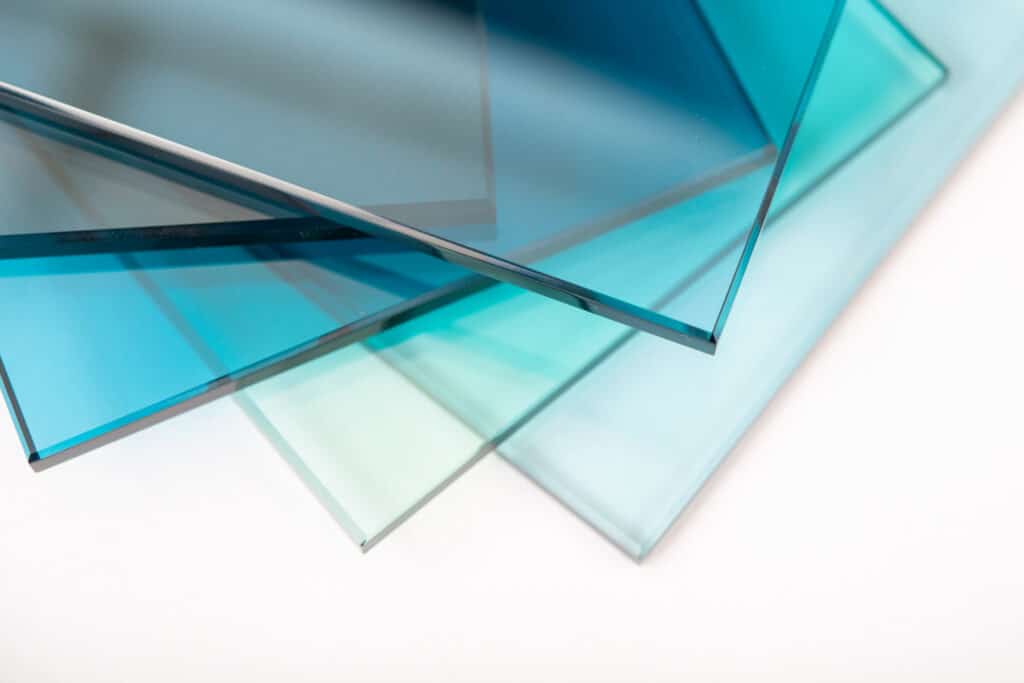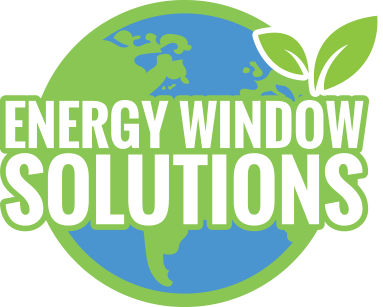
Exploring Self-Cleaning Glass Technology for Windows
Self-cleaning glass is changing the way we think about window maintenance by using cutting-edge technology that keeps your windows looking fresh with almost no effort. It’s especially useful in areas like Dallas, TX, and Fort Worth, TX, where weather conditions can make cleaning windows a hassle.
By combining natural sunlight and rain, this glass practically takes care of itself, making it an attractive choice for both homeowners and businesses. Let’s explore how this incredible technology works, the benefits it offers, and why it’s becoming a go-to solution for modern living.
What Is Self-Cleaning Glass Technology?
Self-cleaning glass is a special type of glass coated with an advanced layer that interacts with natural elements to remove dirt and grime. Unlike traditional windows, which require regular cleaning, this technology actively works to break down organic material and flush it away with rainwater.
It’s designed to reduce maintenance efforts significantly while keeping your windows looking crystal clear. This innovative solution is already popular in regions like Dallas and Fort Worth, where sunny weather and rain showers are ideal for its effectiveness.

How Self-Cleaning Glass Works
Photocatalytic Action
The magic behind self-cleaning glass begins with photocatalytic action, a process that uses sunlight to do the hard work for you. The glass has a special coating that reacts with UV light, breaking down dirt, organic materials, and even some pollutants that stick to its surface.
This reaction makes the grime much easier to remove because it becomes less sticky and more biodegradable. Essentially, the sun becomes your cleaning assistant, working around the clock to keep your windows fresh.
Hydrophilic Effect
In addition to photocatalytic action, the glass uses something called the hydrophilic effect to finish the job. When it rains or when water comes into contact with the glass, it spreads out evenly across the surface instead of forming droplets.
This even spread of water washes away loosened dirt and grime efficiently, leaving no streaks or spots behind. It’s like having a perfectly consistent rinse every time it rains, which is especially handy in areas with unpredictable weather like Dallas or Fort Worth.
Combining Natural Forces
The real brilliance of self-cleaning glass is how it combines sunlight and rain to stay clean with minimal effort. Sunlight breaks down the dirt, and rainwater washes it away without you having to lift a finger.
Even in dry periods, occasional light rinsing can maintain its effectiveness, meaning you’ll rarely need to get involved. By harnessing these natural forces, self-cleaning glass offers a low-maintenance solution that’s both practical and eco-friendly.
Benefits of Self-Cleaning Glass for Windows
Low Maintenance
One of the biggest benefits of self-cleaning glass is its low-maintenance nature. Traditional windows require frequent washing, especially in areas with dust, pollen, or other debris.
Self-cleaning glass drastically reduces the need for regular scrubbing by using natural sunlight and rain to do the work for you. This means less time spent cleaning and more time enjoying spotless, streak-free windows with minimal effort.
Enhanced Aesthetics
Self-cleaning glass doesn’t just make cleaning easier; it also keeps your windows looking consistently great. Because the glass stays free of dirt, streaks, and water spots, your home or building maintains a polished and professional appearance.
For homeowners in places like Dallas and Fort Worth, where curb appeal is highly valued, this feature is a big win. Clean windows can brighten a room, enhance natural light, and improve the overall look of your space.
Eco-Friendly
Choosing self-cleaning glass is also an environmentally conscious decision. It significantly reduces the need for water and chemical cleaners, both of which are commonly used in traditional window maintenance.
By relying on sunlight and rain, you’re not only saving resources but also cutting back on the environmental impact of harsh cleaning agents. This makes it a sustainable option for those looking to minimize their carbon footprint.
Long-Term Cost Savings
While self-cleaning glass might cost more upfront, it saves money in the long run by reducing cleaning costs. You’ll spend less on professional window cleaning services or supplies, and you’ll save time that could be spent on other tasks.
Over the years, these savings add up, making self-cleaning glass a smart investment for both residential and commercial properties.
Where Self-Cleaning Glass Is Most Effective
Residential Homes
Self-cleaning glass is a fantastic option for homeowners, especially for those with hard-to-reach windows like skylights or large glass doors. These areas often go uncleaned for long periods because they’re difficult or dangerous to access.
With self-cleaning glass, natural elements like sunlight and rain handle the grime, keeping your windows spotless without the hassle of ladders or long tools. For homes in Dallas and Fort Worth, where weather can alternate between bright sun and rainy days, this technology fits perfectly into daily life.
Commercial Buildings
For commercial buildings, especially high-rises, cleaning windows can be a significant expense and safety risk. Self-cleaning glass offers an efficient solution by drastically reducing the need for professional cleaning crews.
Sunlight and rain take care of most of the work, which means fewer resources spent on maintenance and improved safety for cleaning teams. The result is a cleaner, more professional appearance for businesses with minimal ongoing effort.
Greenhouses
Greenhouses are another excellent use case for self-cleaning glass. These structures rely on clear glass to allow maximum sunlight for healthy plant growth, but dirt and grime can quickly block light and hinder photosynthesis.
With self-cleaning glass, the coating ensures debris is broken down and washed away, maintaining optimal light transmission. Whether it’s a small backyard greenhouse or a large-scale operation, this technology is a game-changer for keeping plants thriving without constant upkeep.
Challenges of Self-Cleaning Glass Technology
Dependence on Natural Elements
While self-cleaning glass is impressive, its effectiveness depends heavily on natural elements like sunlight and rain. The photocatalytic coating needs UV light to activate, and the hydrophilic effect requires water to rinse away dirt.
In areas with prolonged dry spells or heavy shading, the glass may not perform at its best, requiring occasional manual cleaning. For residents in places like Dallas or Fort Worth, this might not be a major issue due to the generally sunny and rainy weather, but it’s something to consider.
Initial Cost
One of the drawbacks of self-cleaning glass is its higher upfront cost compared to traditional glass. The advanced coating and manufacturing process make it more expensive, which might deter some homeowners or businesses.
However, these initial costs are often offset by long-term savings in reduced cleaning efforts and professional services. For those willing to invest upfront, the convenience and savings over time make it a worthwhile consideration.
Limited Effectiveness for Heavy Dirt
Self-cleaning glass works best on light to moderate grime, but it’s not foolproof against heavy buildup. Dirt that’s baked on overtime or stubborn residues like bird droppings may still require some manual intervention.
While this technology minimizes cleaning frequency, it’s not a complete replacement for occasional maintenance, especially in areas prone to dust storms or pollution. A quick rinse with mild soap and water can help tackle the more stubborn spots without damaging the coating.
Types of Self-Cleaning Glass
Passive Coatings
Passive coatings are the most straightforward and widely used type of this technology, relying solely on natural elements like sunlight and rain to keep windows clean.
The surface is treated with a special UV-reactive layer that breaks down dirt and organic material when exposed to sunlight. Rainwater or any natural moisture then spreads evenly across the glass, washing away the debris without leaving streaks behind.
This hands-off approach makes passive coatings an excellent choice for regions with sunny weather and moderate rainfall, like Dallas and Fort Worth. It’s a low-maintenance and cost-effective option for homeowners looking for a simple yet efficient way to keep their windows spotless.
Active Systems
Active systems take the technology to the next level by incorporating additional features that enhance cleaning efficiency. These systems often use advanced coatings with electrically charged layers or specialized chemical treatments to actively repel dirt and water.
Unlike passive coatings, active systems can perform well even in areas with limited sunlight or infrequent rainfall, making them more versatile. While they come at a higher initial cost, they are particularly effective for challenging applications, such as high-rise buildings or heavily shaded areas.
Hybrid Models
Hybrid models combine self-cleaning features with additional benefits like energy efficiency and UV protection, making them a versatile choice for modern homes and businesses.
These models not only keep windows clear of dirt but also help block harmful UV rays and improve insulation, which is especially valuable in areas like Dallas and Fort Worth with intense sunlight. By reducing glare and minimizing heat transfer, hybrid glass can make interiors more comfortable while maintaining pristine windows.
How to Choose Self-Cleaning Glass for Your Home
Consider Your Location
The effectiveness of this advanced glass largely depends on the conditions in your area. Regions like Dallas and Fort Worth, which see plenty of sunlight and moderate rainfall, are ideal for activating the technology’s natural cleaning processes.
However, if your home is in a shaded location or surrounded by trees, you might need to occasionally rinse the windows manually to maintain their performance.
Urban areas with dust and pollution might also require some additional upkeep to ensure cleanliness. Taking your local environment into account will help you maximize the benefits of this innovative solution.
Evaluate Your Needs
Different homes have different requirements, and it’s important to consider where this technology will make the most impact. High-up or hard-to-reach windows, such as skylights or upper-level glass panels, are excellent candidates since cleaning them manually can be both challenging and time-consuming.
If your home features large glass doors, expansive windows, or other prominent glass surfaces, reducing cleaning frequency can save significant time and effort. For busy homeowners or those looking for added convenience, this solution can simplify upkeep while keeping your property looking its best.
Consult a Professional
Seeking professional advice is essential to make an informed decision about upgrading to this glass. A knowledgeable window installer can evaluate your current windows to determine if they’re compatible with the technology or if new installations are required.
Professionals can also provide recommendations based on your budget, design preferences, and environmental conditions to ensure you get the best fit for your needs. By working with an expert, you can confidently select the ideal option for your home, whether you’re in Dallas, Fort Worth, or any other area.
Maintenance Tips for Long-Lasting Performance
Regular Inspections
Although designed for low-maintenance living, these windows still benefit from regular inspections to ensure optimal performance. Over time, weather exposure, dirt buildup, or environmental factors can gradually wear down the specialized coating.
A periodic check can help you identify any small issues, such as scratches or areas where the coating may be thinning before they become larger problems.
Inspections are especially helpful after storms or harsh weather, which may impact the surface. Proactively maintaining your windows through simple checks can extend their lifespan and keep them working effectively for years to come.
Occasional Cleaning
While the technology minimizes cleaning needs, occasional manual cleaning may be necessary for certain conditions. Stubborn grime, bird droppings, or residue from storms might not wash away with rain alone, requiring a bit of extra attention.
A light wash using mild soap and water is usually enough to remove any buildup without damaging the coating. Make sure to rinse thoroughly and avoid leaving streaks or soap residue. Occasional cleaning not only keeps the windows spotless but also ensures the coating continues functioning at its best.
Avoid Abrasive Materials
Maintaining the integrity of the coating is crucial for long-lasting performance, so avoiding abrasive materials is key. Tools like steel wool, rough brushes, or strong chemical cleaners can scratch or strip away the protective layer, reducing the technology’s effectiveness.
Instead, opt for soft microfiber cloths, sponges, and non-abrasive glass cleaners specifically designed for coated surfaces. Gentle handling will help preserve the coating while maintaining a pristine look. By taking these precautions, your windows will stay clean and efficient for years, ensuring you get the most from your investment.
Environmental Benefits of Self-Cleaning Glass
Reducing Water Usage
One of the most impactful environmental benefits of this technology is how it drastically reduces water usage. Traditional window cleaning, especially for large homes or commercial buildings, can consume gallons of water in a single session.
With windows that utilize natural rainfall for cleaning, the need for manual washing is significantly reduced. This not only saves water but also minimizes the effort required to maintain a clean, streak-free surface.
For areas like Dallas and Fort Worth, where water conservation is becoming a priority, this innovation provides a practical and eco-conscious solution.
Minimizing Chemical Use
Another important advantage is the reduced dependence on cleaning chemicals, which often have harmful environmental effects. Traditional cleaning involves detergents and solutions that can pollute local water systems when rinsed away.
By relying on natural sunlight and rain to keep windows clean, this technology eliminates the need for frequent use of such chemicals. This shift to natural processes promotes a cleaner, safer ecosystem while also reducing household or business expenses on cleaning products.
It’s an environmentally friendly choice that also simplifies maintenance for residents and business owners in Dallas and Fort Worth.
Supporting Sustainable Living
Adopting this advanced technology is a simple yet impactful step toward embracing sustainable living. By cutting down on water usage, limiting chemical reliance, and reducing manual cleaning, it aligns perfectly with the goals of eco-conscious homeowners and businesses.
It not only reduces environmental impact but also supports greener building designs that emphasize resource conservation. For individuals in Dallas and Fort Worth, installing this technology is a practical way to contribute to environmental sustainability. Plus, it offers the bonus of convenience and consistently clean, beautiful windows.

Frequently Asked Questions (FAQ)
How long does the coating on these windows last?
The coating usually lasts 10 to 20 years, depending on the brand and conditions. Proper care and avoiding abrasive cleaning materials can help extend its lifespan. Manufacturers often provide warranties for added assurance.
Can this technology work in shaded areas?
While it works best in direct sunlight, shaded areas can still benefit to some extent. Without sunlight, occasional rinsing may be required to remove dirt. This ensures the windows stay clean even in less ideal conditions.
Is this technology worth the cost?
It’s worth it for those looking to save time and money on maintenance over the long term. The upfront cost is higher but often offset by reduced cleaning expenses. It’s especially valuable for homes with hard-to-reach windows.
Can it be installed on existing windows?
Certain coatings can be applied to existing windows, depending on their material and condition. Professional installation is recommended to ensure effectiveness and durability. This option is great for those wanting to upgrade without replacing all their windows.
Are there any downsides to consider?
Some challenges include the upfront cost and reliance on sunlight and rain for cleaning. Heavy grime might still require occasional manual cleaning. However, the overall maintenance is still significantly reduced compared to traditional glass.


